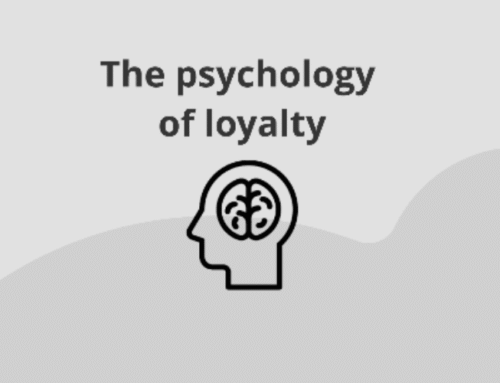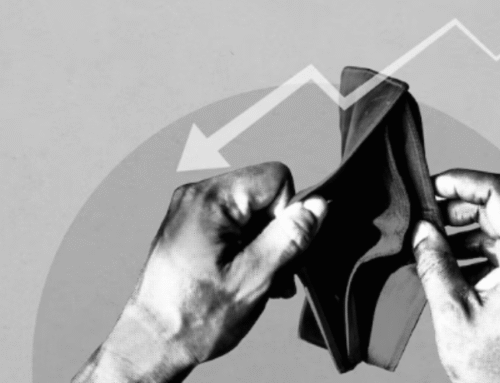CUSTOMER LOYALTY & THE PATH TO PURCHASE
Summary: The term “path to purchase” refers to a set of experiences a shopper has with your brand leading up to the moment they decide to buy from you. Loyalty programs have the power to fundamentally alter that path by leveraging visibility into your customer’s purchase history, and shopping behaviors to build highly relevant content.
Defining the Path to Purchase
When you select a product or service, it’s tempting to think that you’ve come to the decision, completely of your own volition. In reality, however, you’ve likely had hundreds, if not thousands, of experiences along your journey that helped inform or guide your choices.
From television, radio, and newspaper advertisements, to emails, social media engagements, and even word of mouth from friends. Each experience with a brand informs an opinion of it which influences your future purchasing decisions.
As you set out to understand how you can leverage the path to purchase to move the needle on your bottom line, it’s important to have a qualitative understanding of all the various places where someone could come into contact with your brand.
Start by building a mind map or customer journey that documents your various marketing and advertising campaigns. Think: What are all of the ways that a customer may come into contact with your brand before making a purchase?
Micro-Moments
When it comes to the study of consumer behavior and the path to purchase, we tend to think of influencers, in the big picture – a billboard, a video, an advertisement. These engagements can, and very often do, skew much more subtly, though.
- As a business owner, you may think about your experience requesting a demo of a new piece of software. Was it difficult? Easy? Fun? Did this experience make you more, or less likely to purchase that product?
- For your customers, was an email you sent filled with offers for products that that individual would find useful? Or was it a broad, “one size fits all” campaign? Did this engagement make shoppers more likely to purchase your product?
Google refers to these tiny transactions as “micro-moments” and it is precisely through understanding these types of personalized micro-engagements that we can begin to further refine control of our path to purchase.
Don’t forget to add these to your overall map.
How Loyalty Programs Change the Path to Purchase
This journey is not unique to customer retention. It is a model for understanding the way that any given shopper may come to discover, engage with, and evangelize your brand. With the addition of loyalty programs, we have an opportunity to open a second path. One that is heavily weighted in your favor and gives you the ability to leverage specific customer data to more readily influence the decision-making process, in real-time.
What’s the catch? To access this second path, you’ll need to onboard new customers to your loyalty program. This is, of course, a topic unto itself. Once there, however, it’s time to start leveraging the data they provide to start.
We often say that signing a new member up for your loyalty program is a conversion unto itself – almost always, a more valuable one than a single sale. While it may not necessarily represent an exchange of currency, there is quite a bit of unseen value-changing hands. You are providing potential customers with access to exclusive discounts and other promotions and they are providing you with important details about themselves, which, in knowing, you can leverage to build the kind of highly relevant offers and promotions that strongly influence your customer’s journey.

One of the reasons that loyalty can play such an outsized role in influencing the path to purchase is that customers who join your program have, in doing so, added you as a trusted source. They believe that you provide the goods and services they’re looking for, at a price they can afford. Because of that, they’re willing to give you insights into what they need.
In general, this is the kind of data that marketers climb mountains for. Now, instead of blindly pushing content to a general demographic (which may have everything or nothing at all to do with a customer’s actual preferences) you can serve the right products to the right customers at the right time.
Influencing Path to Purchase with Loyalty
Personalization is a big part of this, but not the end all, be all. It’s about curating the shopping experience through a series of touchpoints that engender familiarity and goodwill.
Awareness
At the first stage in the path to purchase, a customer becomes aware of a need. If a customer has joined our loyalty program, they’re certainly aware of our brand and the types of products we offer. How can we use that knowledge to make them aware of the right product at the right time, however?
Awareness, is at some level, simply a matter of repetition and relevance. The more we can engage customers with information about products that appeal to their general interests, the more likely it is that our brand will be the first to pop into their minds when they’ve established a desire for a particular good or service. And the more likely we will be able to influence it.
Segmentation
There are, effectively, two great ways to leverage segmentation in creating product awareness (Though you shouldn’t let that limit your creative process). While customers may not buy every product you offer, you’re teeing them up for the conversion when the time is right.
Segment customers in your loyalty program by interest groups. It’s easy to do this when they first join. Alternatively, each customer can be added to a subscriber group as they purchase specific items. Use these segments to create:
Targeted Emails
Build department-specific emails with content based on similar products. For instance:
- If someone has entered your “boots” segment, send an email about pants and socks.
- If someone has entered your “jewelry” segment, send an email about perfume.
- If someone has entered your “dry cleaning” segment, send them an email about tailoring.
This program is easy to scale this program by creating an email template and replacing the products that you want the customer to buy with segmented content, as you go.
Retargeting
Since you have your customer’s email, try building social media product ads based on the email lists of customers in specific segments. For instance:
- “Members of Linda’s Loyalty Program get 10% off of Boots for the Next Week”
- “Buy Boots and Get 10% off Socks Next Week”
- “Buy Two Pair of Boots and Get Free Socks Next Week”
If you want to amplify your reach on Facebook, try delivering ads based on “Look-A-Like” audiences. Facebook will automatically find users who exhibit behavior patterns and interests similar to your existing shoppers and serve your ads to them, as well.
Dynamic segmentation, or the ability of your loyalty software to create these engagements in real-time and based on a customer’s specific behavior, is advancing quickly. Keep an eye out, as this will represent a huge leap forward in product awareness and the path to purchase.
Consideration
At the second stage in the shopper’s path to purchase, your loyalty program members are deciding how to fulfill this need. What are the big factors here? Research tells us that price, shopping experience, availability, and peer influence play the biggest roles.
Here’s how you can use loyalty to influence your buyer, at each one:
Price
While it’s impossible to know what our competitors’ prices are ahead of time, we can use value-added benefits like points, loyalty dollars, BOGOs, etc… to easily increase your unique value proposition. The goal of offers and promotions like this is twofold:
- We want to embed the value of your loyalty program so deeply into the consideration phase of your shopper’s path to purchase that it becomes a habituated aspect of their journey.
- We want to leverage that habit to increase reach and get the upper hand on our competitors while remaining competitively priced.
Shopping Experience
Customers are engaging with our brands over more platforms, channels, and devices than ever before. When it comes to loyalty, omnichannel software allows customers to join and access your program over any of them. This creates an easier shopping experience for customers and influences their path to purchase.
Product Availability and Delivery
The kind of advanced omnichannel order processing tools that power single-shelf experiences are often paired with integrated loyalty programs. In today’s “on-the-go” world, convenience is a major factor in the ‘consideration’ stage. With order processing, your customers can order and receive their goods, anywhere, taking up less of their time and resources.
Peer Influence
It’s often said that word-of-mouth marketing is more valuable than any other kind. You’ve probably had this experience yourself. Did your friends, family, or co-worker’s opinion influence your decision? Rewarding those in a position to influence other shoppers’ buying decisions through ambassador programs is a no-brainer and has proven results.
Conversion
At the third stage in the path to purchase, shoppers are adding products to their cart. This is a particularly important step where separately branded, but similar, products are sold (A grocery store, for example). As a retailer, these could benefit you in the form of manufacturer rebates and rewards.
Comparative Pricing
You’ve probably seen examples of comparative pricing at your local grocery store. When viewing an item, shoppers are presented with both a retail and ‘club’ price. Comparative pricing can have a powerful influence on which products your customers select as well as help drive new member sign-ups.
Value Added Benefits
We spoke a little about value-added benefits earlier in this post. Similar to comparative benefits, value-added benefits have an “if, then” relationship. For instance:
- If you buy two, then you get one free
- If you buy one, then you get the second one half off
- If you buy three, then you will get double points
In this way, customers are emotionally rewarded for selecting a specific product before they’ve ever purchased it. Value-added benefits can also play an important role in increasing your average order value, as they’re great for incentivizing multi-unit purchases.
Evaluation
In the modern shopping ecosystem, the customer journey is often more a circle than a straight line. Engagements that customers have at each stage in the buying process influence their next purchasing decision. When certain tools are used to maximize feedback, they can be leveraged to influence the next purchasing decisions, as well.
Surveys
Sending automated surveys about the products your customers have purchased gives them a stake in the product and an opportunity for you to receive valuable feedback. A survey response shouldn’t be the endpoint in your shopper’s journey, however. Use surveys as a jumping-off point to retarget customers who are happy and send offers for different products to customers who aren’t.
Next Purchase Coupons
Now that you know that a customer has purchased a product, keep them coming back with a targeted discount on that product by offering a small coupon. If a coupon is expiring, make sure you build an automated reminder, in the form of an email. The next time they’re in the market, they’ll likely think of you first.
Accumulated Points
Accumulated or ‘Ghost’ rewards are applied only after the shopper has reached a certain quantity or spending threshold. This point structure leverages the nature of the sunk cost. That is, it is more likely that a customer will think of you next time if they’re working towards an established reward.
Split Testing
Want to see how effective these strategies are at affecting your business? Start by A/B testing each stage of your funnel. As you move down the path to purchase, pause for thirty to ninety days and you’ll start to see increasing engagement.
If you’re interested in better understanding how bLoyal can help you take control of your customer’s path to purchase with deep, product-level insights, request a free demo of our software above. You can also reach our team of loyalty marketing professionals at sales@bloyal.com.




